Irises are a favourite with gardeners and are known for their beautiful, colorful blooms. The name of the flower originates from Greek mythology. Iris was the Greek goddess of the rainbow and messenger to the Gods. The iris flower was so named in the 14th century because of the spectrum of colors of the many species.
Iris Types
There are around 260-300 species of the iris flower, which have two main groups: rhizomatous and bulbous.
The bulbous iris will flower earlier than the rhizomatous variety. You can expect this iris to flower early springtime, whereas rhizomatous irises bloom later in the summer. Bulbous irises include the Dwarf and Dutch hybrids. This iris plant is in a dormant phase over the summer and shed their leaves following the early blooming season.
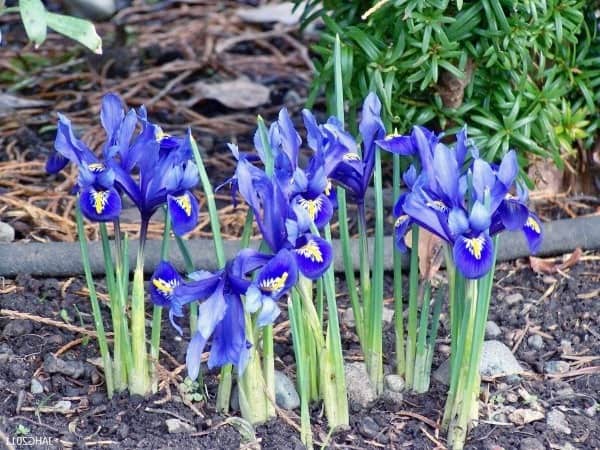
The Dwarf variety is popular in spring florist bouquets. This group includes reticulated irises that grow well in forced pots and rock gardens. Even very busy people prefer this type of iris. But remember to divide this iris flower every second or third year to prevent overcrowding.
Bulbous iris plants include:
- Juno Irises – Juno irises have deep channeled leaves and hail from the Middle East and Asia. This iris is an earlier bloomer and will flower in April.
- European Irises – These European irises include the English, Spanish, and Dutch varieties. The English and Spanish iris varieties are common. Gardeners enjoy their showy flowers in a variety of colors. They are a hardier type of iris plant and benefit from a shady environment. They bloom from May through to July.
- Reticulated Irises – Reticulated irises have yellow and blue-purple 3-inch flowers and are around 4 inches in height. Originating from Turkey, Northern Iraq, and Iran, they need to be planted in a sunny spot and require minimal water. These irises are the earliest to bloom in February.
Rhizomatous iris
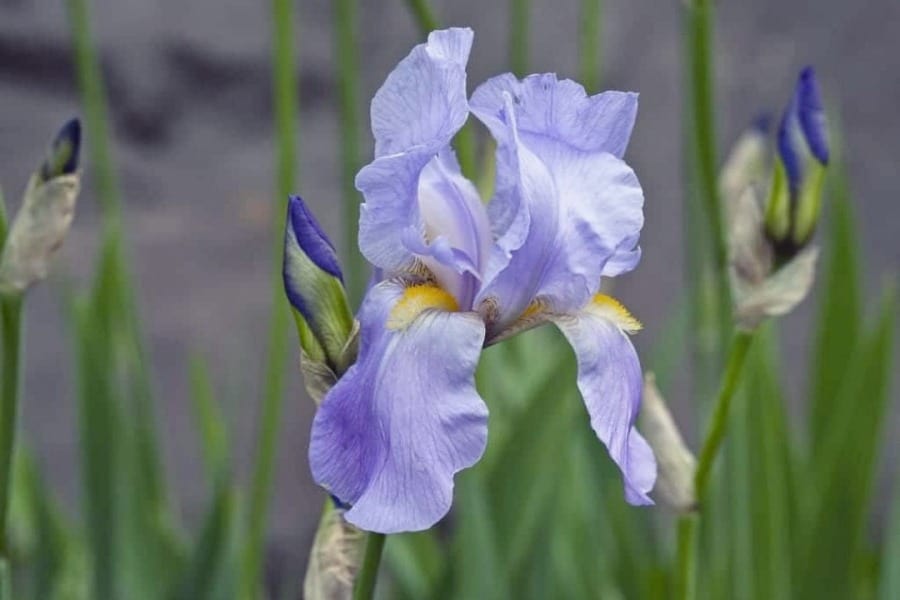
Rhizomatous irises are grown from a creeping rootstalk called a rhizome. This group is split into three classifications:
- Bearded
- Beardless
- Crested.
Bearded iris
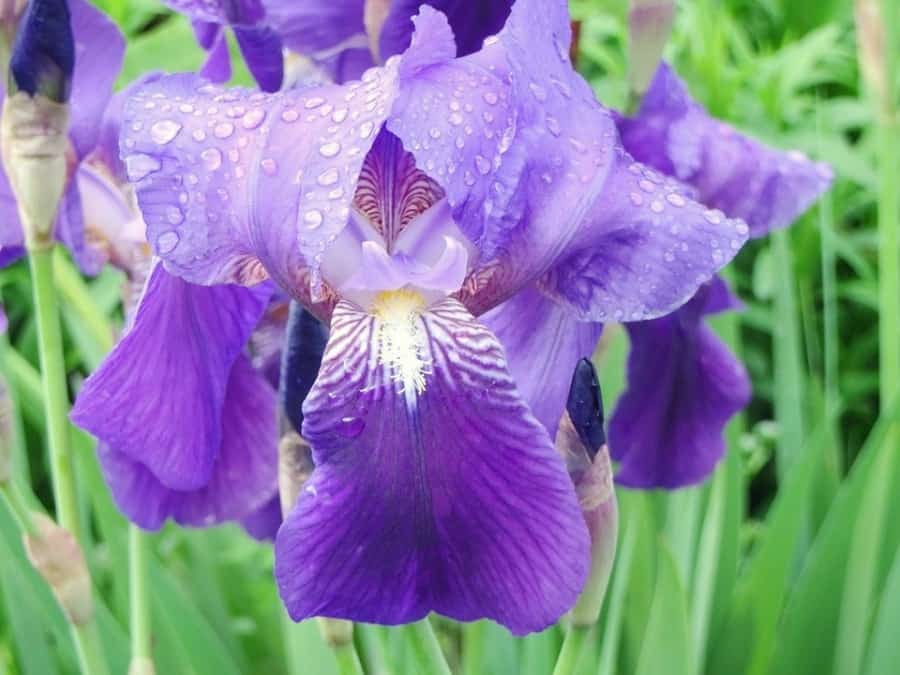
The bearded iris flower is so named because of a “beard” of hairs in the middle of each fall or the outer petals. Bearded irises are further grouped into dwarf, tall (also known as iris “Casino Cruiser” or “Casino Queen”), or aril. They are popular in gardens and easy to propagate. Plant these during the late summer months with the iris rhizome exposed on the soil surface.
Bearded irises should be planted in sunnier spots and divided every two to three years.
Bearded iris Oncocyclus section
This group comprises around 30 to 60 species depending on the authority. They have large flowers and sickle-shaped leaves. As long as they are planted shallowly in well-drained soil, they grow well. They should be left over the fall but protected from heavy rain.
Bearded iris Regelia section
The regelia section is similar to the cushion iris flower. Species include numerous garden hybrids. They should be planted in sunny places in September or October. Lift the rhizomes in July after the leaves have begun to wither.
Beardless iris
The beardless iris flower lacks the central hairs and can be propagated from seeds. There are classified into the following subgroups based on geographic origin:
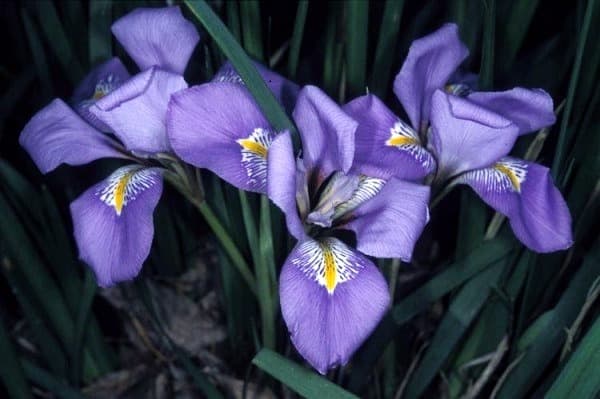
- Pacific Coast – Pacific Coast irises enjoy milder climates and can tolerate winter rain.
- Siberica – Siberian irises require less maintenance and are suitable for borders.
- Spuria – These are tall plants, often blue-purple in color. They need at least six hours of sunlight per day and bloom around June.
- Louisiana – Native to the Louisiana wetlands these varieties enjoy moist and wet soils.
- Japanese -This variety grows wild in Japan and is suited to South Eastern US states.
- Other.
Crested iris
Crested irises have beautiful, stemless flowers with blue-lilac petals with white patches or yellow or orange crests. The pointed leaves are approximately six inches in height. This variety has short-lived blooms that appear in May. Crested irises are a great choice if you have limited sunlight as they thrive in the shade.
The rhizomes should be split and replanted in moist, acidic soil every two to five years.
Iris size
With so many varieties, the iris plant ranges greatly in size. The smallest iris flower is the Dwarf variety. These irises are from 6 to 12 inches in height and width. The Dutch and Tall bearded iris plants are best planted outside due to their size.
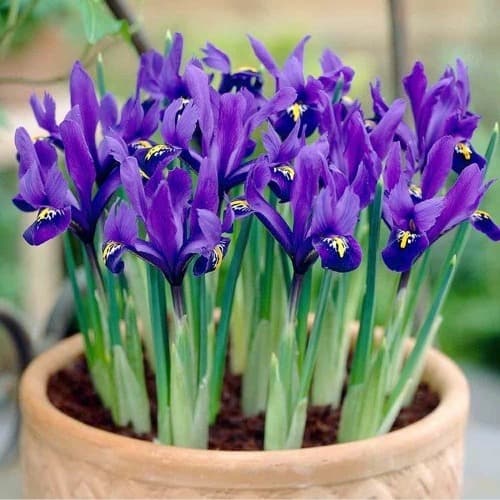
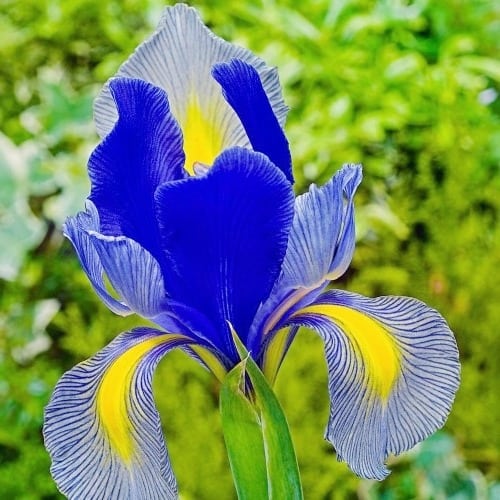
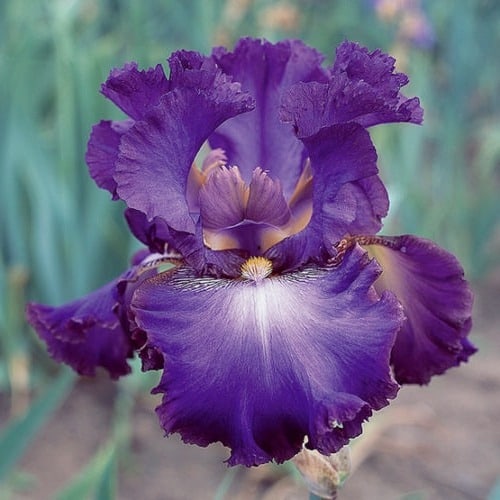
The Dutch variety of the iris plant measures from 1 ½ foot to 2 feet in height, and 6-12 inches wide. And the tall bearded iris flower can grow from 2 to 4 feet and will spread from 1 ½ foot to 2 feet.
Iris flower colors

Considering the name iris means rainbow, you’ll find this flower has a wide variety of colors. The most common colors of the iris flower are white, yellow, and shades of purple. But with so many species, irises can also be pink, red, orange, blue, and even black.
Habitat
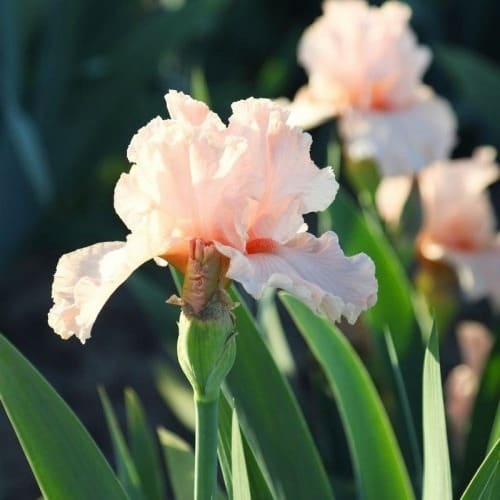
The iris plant is perennial and is generally found in dry, semi-desert regions. However, irises can be found in colder, wetter areas. Some varieties are found in bogs, along riverbanks, and in cold mountainous places. Typically they grow in the temperate Northern hemisphere zones. This iris flower is commonly grown in North America as well as Asia and Europe.
Top 3 best iris gardens in the world
Presby Memorial Iris Gardens, New Jersey
Located at the base of the 7 1/2 acre Mountainside Park, the Presby Memorial Iris Gardens boasts one of the best iris gardens in the U.S. The gardens have over 14,000 and 3,000 varieties. Throughout a season they produce more than 100,000 blooms. It is also home to the PreBee Sanctuary, which has over 100,000 honey bees. Presby is affectionately referred to as the “rainbow on the hill.”
The annual iris flower blooming season stretches from mid-May through to October. The gardens faced financial difficulty in 2009 but have been maintained by grants from the Citizens Committee’s Board of Trustees and the Township of Montclair. Since then grounds are tended to by a team of volunteers.
Schreiner’s Iris Flower Garden, Salem, Orlando

If you are looking for a wonderful day out and the opportunity to buy iris rhizomes and bulbs, then Schreiner’s Iris Garden, Salem, Orlando is a great place to go. You can see irises of every color and variety. There is a gift shop and farm, but you need to order bulbs and rhizomes which will be posted out to you rather than buying them on site.
Schreiner’s specialize in cultivating the best quality bearded iris flower and has won several awards. They include The John.C. Wister Memorial Award, The Men’s Garden Club Medal, AIS Hybridizer’s Medal, Perennial Plant Association Award have all been awarded by the American Iris Society. Schreiner’s has also been recognized by The British and Italian Iris Society. Most notably, Schreiner’s have been awarded the highest accolade an iris flower can achieve, The Dykes Memorial Medal. The medal has been awarded eleven times from 1958 to 2003.
There are also live demonstrations every weekend where staff shows you the best way to dig, plant, and divide iris.
Entrance to the gardens is $5 for a car and $20 for a bus. If you live in the local area, you can get a season pass for $10 for a car and $40 for a bus. If you come on a bike, it’s just a dollar and you can bring your dog provided it’s on a leash.
The display gardens are open from May 11th to June 2nd from 9 am to 6 pm. If you are looking to capture beautiful pictures of irises, then photographers are welcome.
Yokosuka Iris Flower Garden
If irises are your passion, then Japan is a great place to visit. In Japan, the Japanese iris varieties grow wild. And there are several iris gardens to visit. Yokosuka iris garden is one of the best in Japan, and arguably the world. It’s located close to the Yokosuka Naval Station in Kanagawa prefecture, Japan.
The park is a peaceful and wonderful environment with a stunning array of around 140,000 irises and 412 varieties. Peak season is May and June when thousands of visitors flock to the gardens to soak up the natural beauty.

One day is not enough to appreciate the expanse of irises cultivated in this single garden, so take your time. There is an entrance fee to pay of approximately 310 JPY, but that’s less than $3. Don’t just try to remember the sights of the garden, take a good quality camera, so you can take pictures of the vibrant purple and white irises.
How to grow and breed irises
When to plant iris bulbs
Planting iris rhizomes in the later summer months are best for many varieties and will allow the plant to form roots before the end of the growing period. If you live in a hotter climate, then planting iris rhizomes can wait until as late as October.
Knowing when to plant iris bulbs also depends on the type of iris.
Where to plant iris rhizomes
There are so many iris plant species that there is no set rule for where to plant iris rhizomes. Most species need to be exposed to sunlight, and it’s important they do not stand in water. You can plant varieties such as the crested iris in the partial shade by they also benefit from raised beds where there is good drainage.

How to grow and care for irises
Knowing how to grow care for irises will help you get the best blooms. Below are several more tips for how to grow and care for irises.
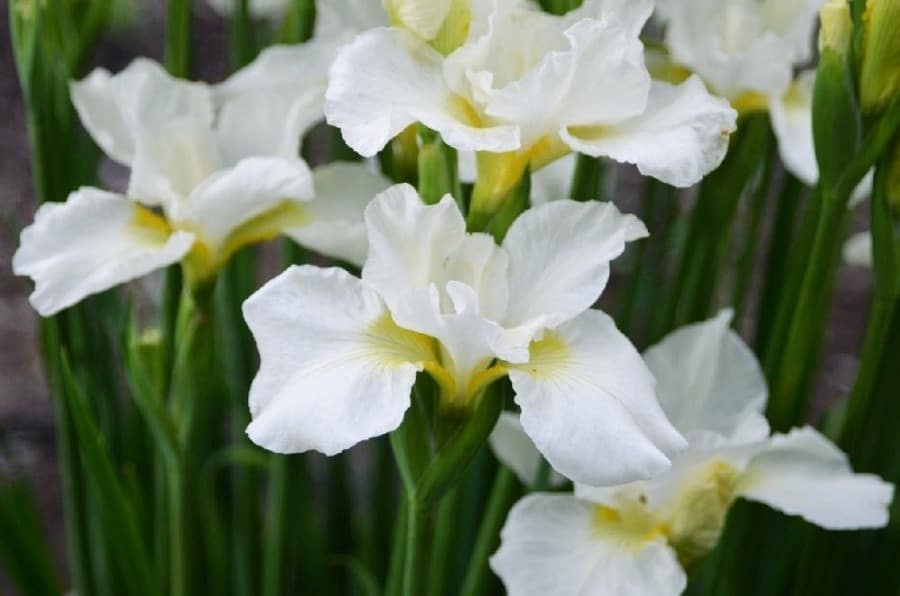
- Once you notice the flowers of your iris plant beginning to fade, then cut the flower stalks back to the base of the plant.
- You can encourage a second bloom on re-blooming iris varieties, by pruning away faded flowers.
- You still need to care for iris plants during the fall months by cutting away any dead foliage. Prune the healthy leaves to around five inches in height.
- Iris’s care is important throughout the winter months. If the soil freezes, you can apply mulch over the iris plant to stop the roots heaving out of the soil in between freezing and thawed periods.
- Don’t be tempted to force the iris plant back into the soil if they have heaved through. Instead, cover any exposed roots and rhizomes with additional soil.
- To improve the soil conditions before you plant iris bulbs use a slow-release fertilizer. Compost, well-rotted manure or peat moss can increase the organic matter content. Ensure both the fertilizer and organic matter are worked through the soil to a depth of around six inches.
- In springtime when the plants are coming through, sprinkle a shallow layer of fertilizer over the soil.
- The roots of the iris plant should always be covered, but the rhizome should be visible and partially above the ground. If the rhizomes are buried, they may rot.
- After the blooms fade the foliage should be left to yellow before being removed. This is a way for the perennial iris to pass nutrients to next year’s plant.
- Do not overwater irises. They are drought resistant and will rot easily but make sure to water occasionally during hot and dry summer months.
When do irises bloom?
Once again, there is no set rule for when irises bloom, owing to the vast number of varieties. The first iris variety to flower are types like the reticulated, which will bloom either in February or March.
These varieties are popular and signal to many an end to the winter months and the start of warmer spring months. Species such as the dwarf iris flower next. The taller bearded iris flower is the latest to bloom around July.
Iris gardens are reaching their peak season around May.
How to transplant and divide irises
Irises can be grown by either root separation or seed. Iris rhizomes have the appearance of a long, thin potato with roots. When transplanting any iris variety, begin by separating the rhizome. Make sure to have some root and a leaf or two in each section. The planting holes should be around 10 inches deep.
Add one tablespoon of fertilizer into the bottom and then cover with gravel or broken pottery to create good drainage for the iris plant. Fill the hole with loose soil before planting the root section no more than one inch deep. The rhizomes should be planted with the roots below and the rhizome slightly exposed. Space the rhizomes anywhere from 8 to 18 inches apart depending on close you want the iris flowers to be.
F&Q
💐 How to divide rhizomes
To prevent overcrowding, you need to know how to divide rhizomes.
You should begin dividing irises when you can see rhizomes protruding from the soil. Or if you observe a decrease in blooming. It depends on the iris variety, but dividing irises is a job you need to do every two to five years. In a year when you are dividing you should leave the foliage and dig up rhizomes with care. You should be able to pull them apart using your hands while others you will need to sever using a knife.
Healthy rhizomes are around one inch wide. They should have one or two leaf fans with a good root structure. If the rhizomes are soft, hollow or being to rot, it’s best to discard them. Rinse the roots and make sure they are free from pests and disease, in particular, iris borer worms before transplanting. Prune leaves to around five inches then re-plant with the rhizome raised and the roots outspread.
💐 What diseases and pests affect irises?
Bugs and nasties that can destroy iris blooms and plants include rhizome rot, nematodes, aphids, whiteflies, bacterial leaf blight, rust, viruses, leaf spot, snails, slugs, iris borers, iris weevil, crown rot, verbena bud moth, and thrips.
💐 How should I water and fertilize the soil?
Irises don’t need a lot of water. If the soil is dry before it’s bloom time. Some types need more watering than others. Varieties such as Japanese and Siberian extra water. Watering regularly during a dry summer can help with a better second bloom. Make sure you don’t use mulch over the foliage or rhizomes as this can cause rot. Instead, use a low-nitrogen fertilizer around a month before bloom time.
💐 Exposure to the sun
Most iris plants need to be exposed to sunlight for a minimum of half of the day. If you live in cooler areas with less sunlight, then you can still grow irises. Choose Siberian irises and Pacific Coast varieties which will grow with less sunlight. Several iris varieties grow with no sunlight, but they are unlikely to flower.
💐 Are irises toxic?
If you’re a furbaby parent, you’ll know nothing is off-limits. Cats and dogs are carnivores, but that won’t stop them from nibbling on anything from your slippers to your most prized iris flower. They may do this for nutrients and fiber, or out of boredom. However, irises are poisonous to cats and dogs.
If your pet has consumed any part of the iris plant or flower, then you should contact your vet. They can administer charcoal treatment to make them regurgitate. Since all parts of irises are poisonous to cats and dogs, if they show interest in eating your plants, then take precautions. You must fence off outdoor plants. Refrain from keeping any iris plant inside if you have a cat, since there are no parts of the home, your cat can’t reach, including high shelves and mantelpieces.
Vincent Van Gogh’s “Irises”
The troubled artist Vincent Van Gogh is perhaps best known for his study of Sunflowers. But irises also mesmerized Van Gogh. He captured their beauty in four different paintings. Of the 130 pictures, Van Gogh painted during his stay at the mental institution, Saint-Remy, “Irises” was the first.
The painting vividly and beautifully depicts a field of vibrant violet irises bursting from rich red soil. In the background, Van Gogh painted bright orange marigolds. Vincent painted “Irises” in May 1889 and sent it to his brother Theo in Paris. Theo was captured by the work, describing it as a beautiful study full of air and life. A few short months later, in September 1889, it was displayed at the Salon des Independents. The painting caught the attention of critic Félix Fénéon who wrote:
“The Irises violently slash into long strips, their violet petals on sword-like leaves.”
The painting has been sold twelve times and was last auctioned in 1987. When “Irises” was sold in 1987 it held the record for the most expensive artwork, reaching $53.9 million. “Irises” was last sold in 1990 to the J. Paul Getty Museum in Malibu, California. The painting is on display to the public for free.
Moreover, almost all bright colors can be found in a variety of iris flowers. Look at the wonderful pictures of irises, painted by world-known artist:

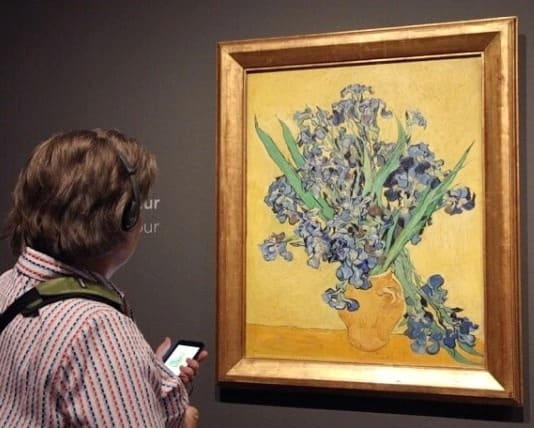
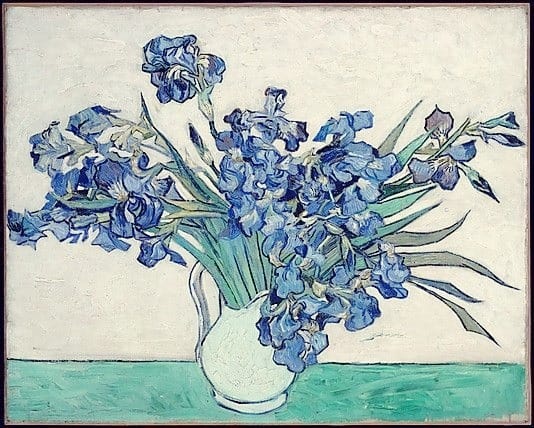
The Getty museum collection also includes works from Manet, Monet, Cezanne, Gauguin, Rembrandt, and Rouben.
Get Involved

If you love irises, there are places where you can go to connect. Iris lovers in Canada can check out the Ontario Iris Society. This is a non-profit organization and is affiliated with the American Iris Society. The site contains details of meetings, shows, and auctions. You can also check out the Canadian Iris Society. You don’t need any skill or experience in breeding irises if you’re interested in irises you’re welcome to join. Membership is $20 annually or $50 for three years.

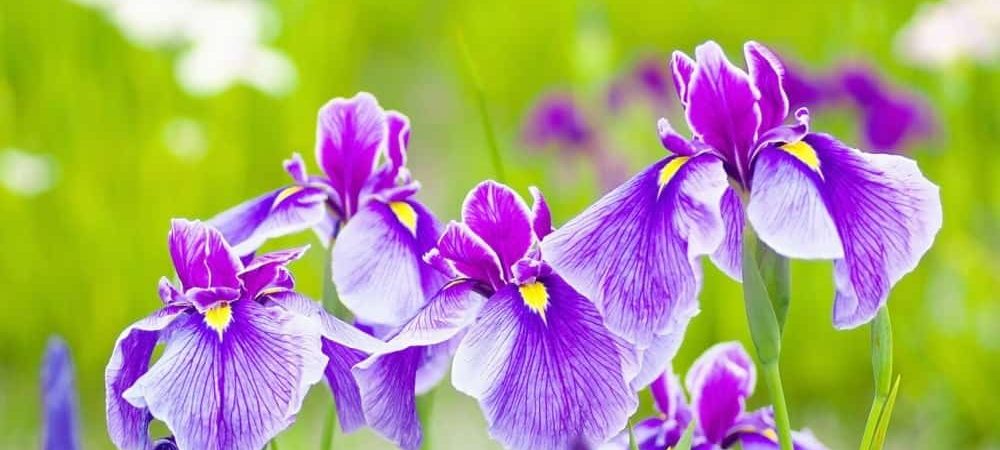
 Hello everyone! We are a society of iris lovers. Growing different kinds of irises – is our all-time favorite hobby. In our blog, you find detailed information about iris flower cultivation and fertilization. We will show you that gardening can be interesting and fun!
Hello everyone! We are a society of iris lovers. Growing different kinds of irises – is our all-time favorite hobby. In our blog, you find detailed information about iris flower cultivation and fertilization. We will show you that gardening can be interesting and fun!